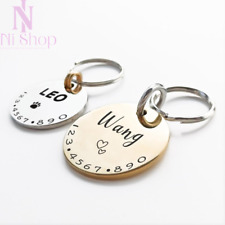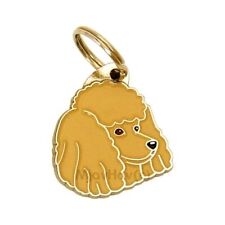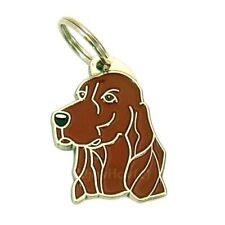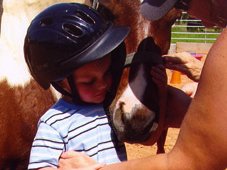Choosing Bits

All to often, the human take on the situation is that a horse is a big animal, therefore the pressures needed to control it must be big and strong. That’s a myth. A rocket engine is controlled by tiny bits of information being fed one at a time by a computer. Each of those bits is either a "zero” or a "one”. The bits flow in a pattern called a program that the rocket understands. Same thing with a horse. All it needs are tiny bits of information fed to it with the right timing to get with the program.
There are very few surfaces where the bit can apply pressure. So it takes some pretty complex applications of pressure to those few points to create complex communication. The bit must be shaped in such a way and fit properly within the mouth so horse is able to understand what the communication is. Therefore a bit must be both directional and horse logical. It must not cause any injury which will result in temporary numbness.
The area in the horse’s mouth where a bit communicates our pressures most effectively to the horse is called the bars. These gaps between the front teeth and the back teeth on either side of the jaw consist of tissue-covered, pressure-sensitive cartilage. Between the bars, the bit lays across and presses against the horse’s tongue. Depending on its shape and adjustment, a bit can also put pressure on the horse’s lips and on the roof of its mouth. Pressures on the lips are the least effective because the lips are an unstable surface and easily injured.
The first thing to look at on any device you put in the horse’s mouth is its contact area-the size of the area that actually touches the horse and transmits pressure or feel. When trainers talk about "pounds of pressure” on a bit, they are really talking about pounds per square inch of pressure over this contact area. The thinner the bit, the less contact area it has and the greater the pounds per square in of pressure. The thicker the bit, the greater the contact area and the lower the pounds per square inch of pressure.
Put another way, the thinner the bit, the more noticeable any pressure on the bars will be. With a thicker bit, the same amount of rein pressure will be less noticeable. So the effective size of the mouthpiece is the first thing to look at because it will determine how noticeable the pressure you apply will be. Rough bit surfaces such as twists reduce the area where pressure is felt much like rough tread reduces a tire’s surface area where it meets the road.
The second thing to look at is whether the mouthpiece is straight or whether it is shaped so it relieves the pressure on the tongue. If the bit is straight, the horse’s tongue absorbs some of the pressure and the horse will feel less pressure on the bars. The bars are the only places in the mouth we can use to communicate an understandable directional pressure. If the mouthpiece is hinged or grooved so it relieves pressure on the tongue, the bit is more noticeable on the bars of the mouth and gives more directional guidance.
A tongue groove and a port are not the same thing. A tongue groove is a shallow, raised indentation in the center of the mouthpiece only high enough to relieve tongue pressure. It allows the bit’s pressures to be felt on the bars. A port is a raised groove or attached spoon so tall that it puts pressure on the roof of the mouth when the shanks of the bit are rotated by pulling on the reins. If you could park a little boat in it, it’s a port. A port is severe and nondirectional and cannot teach the horse anything.
The third thing to look at is whether the bit has leverage. The way to measure leverage is to compare the distance from the mouthpiece to where the reins attach to the distance from the mouthpiece to the curb chain (or strap). Most curb bits have a 3:1 leverage ratio. That means if you put 10 pounds of pull on the reins, the horse will feel 30 pounds of pressure squeezing his mouth.
Leverage decreases the amount of time it takes for the horse to feel bit pressure. If you have a bit with 3:1 leverage, the horse feels 10 pounds of pressure three times faster than he would if you applied 10 pounds of pressure with a non-leverage bit like a snaffle. To make this kind of bit pressure understandable and horse logical you would have to soften the pressure to reward the horse three times as quickly as you would with a non-leverage bit. Because of this exaggerated pressure and release, curb bits impede true feel and understanding between you and your horse.
Curbs are also nondirectional. Their pressure is felt as a clamping between the horse’s chin and the bars of his mouth, and therefore can convey minimal direction to the horse. If you use a chain, the pressure is more noticeable underneath the chin. If you use a thick leather strap, the pressure is more noticeable on the bars of the mouth. In most cases, curb bits are used as a signaling device rather than as a training device to help the horse learn to shape himself correctly.
One of the biggest mistakes everybody makes is picturing the bit by itself. The bit is only part of the overall corridor of aids you use to create the shapes you want the horse to take. You do not want the bit to be louder than your legs or seat. You don’t need a big bit to get the horse’s attention and you don’t need a big bit to get the horse stopped. You just need to know how to use a bit to make it understandable and directional to the horse.
Whenever you see a horse fighting the bit, he has lost feeling for the rest of the aids. It is just like two people who speak different languages raising their voices louder and louder in an effort to be understood. Rhythm, relaxation and repetition are the cornerstones of good training.













